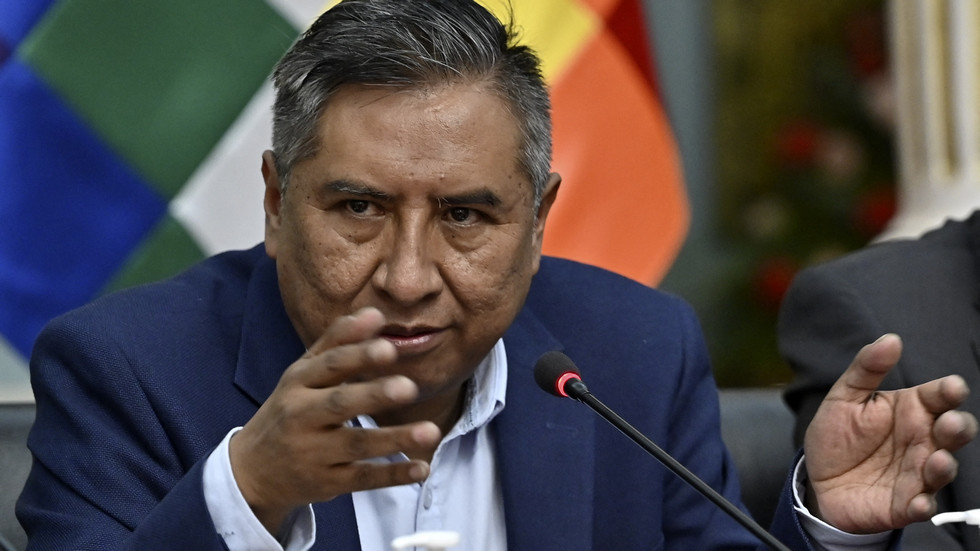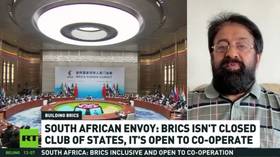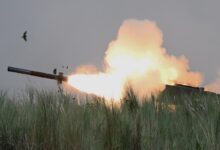
Bolivia wants to foster ties with emerging economies and move towards sustainable development, its foreign minister has explained

Bolivian Minister of Foreign Affairs Rogelio Mayta answers questions during a press conference in La Paz on April 16, 2021. © AIZAR RALDES / AFP
The ever-growing list of nations ready to enter the BRICS economic bloc now includes Bolivia, according to Foreign Minister Rogelio Mayta.
Writing on Twitter (rebranded as ‘X’) on Monday, the minister said his nation would attend the summit of the bloc – which is made up of Brazil, Russia, India, China, and South Africa – in Johannesburg set for August 22–24, and that Bolivian President Luis Arce will present his vision for the country’s future economic and social development at the meeting.
“We also want to inform you that on June 12, 2023, President Arce officially communicated Bolivia’s willingness to join the group,” Mayta said, explaining that his country wanted to move towards sustainable and inclusive development and strengthen cooperation with emerging economies.
He stated that Bolivia had discussed the matter with all five members of the bloc. “We know that it is a long process, but we are on the right path, working hard for the country,” the foreign minister wrote.

Read more
In June, Russian Deputy Foreign Minister Sergey Ryabkov said that nearly 20 countries were willing to join BRICS, describing it as a sign of the bloc’s increased role in the international arena, while Anil Sooklal, South Africa’s ambassador-at-large, put the number at more than 40.
Argentina, Iran, and Algeria were among the countries that formally applied to join BRICS in 2022, with Egypt, Bangladesh, and Ethiopia following suit this year. In late June, Business Standard reported that BRICS could agree to admit a total of five countries to the bloc at the Johannesburg summit, including Saudi Arabia, Indonesia, the United Arab Emirates, Egypt, and Argentina.
BRICS, which began as an informal club of non-Western emerging economies, now accounts for over 40% of the global population and nearly a quarter of the world’s GDP.




